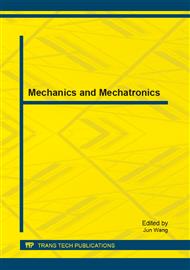p.563
p.570
p.576
p.581
p.587
p.593
p.602
p.611
p.616
Validity Range of Micropipette Radius in Using Hemispherical Cap Model
Abstract:
Micropipette aspiration is a widely used experiment technique for studying mechanical properties of living cells. Its data can be processed in many different ways. Among them, a mathematical model called hemispherical cap model has been developed to evaluate the elastic modulus of the cell membrane undergoing micropipette aspiration. It has been commonly used in cell studies due to its simplicity and convenience. However, this mechanical model has its own assumptions and limitations. In this article, the authors used finite element simulation to obtain the validity range of micropipette radius used in hemispherical cap model. The results provide reliable size instructions in the preparation and post-processing of micropipette experiments.
Info:
Periodical:
Pages:
587-592
Citation:
Online since:
October 2013
Keywords:
Price:
Сopyright:
© 2013 Trans Tech Publications Ltd. All Rights Reserved
Share:
Citation:


